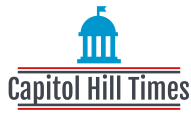Earlier this year, schools around the country received more than a hundred billion dollars from the federal government—American taxpayers, in truth—in order to recover from the pandemic and finally get back to the task of teaching kids.
Although the federal government stipulated that 20 per cent of this money should be dedicated to learning losses caused by the pandemics, schools can spend the rest at their discretion. This means that schools can use this cash injection to improve their facilities, even though they have no direct connection to COVID-19.
Notes: “Some districts invest big in initiatives that aren’t strictly COVID-related.” Education Week. Miami-Dade schools are planning to invest $30 million (or $86 per pupil) in cybersecurity. Raleigh County schools in West Virginia lists a $9 million effort—more than $800 per student—to expand an elementary school, adding nine classrooms, upgrading the library, expanding the kitchen, and separating the cafeteria and the gym. The Newport News school district in Virginia is spending $840,000 for a new student information system to help teachers catalog students’ academic progress.”
Unnamed schools will tap COVID-19 funds to purchase student ID cards and install vape detectors.
According to the report, several districts are spending large sums on stadium expansions and upgrades to their athletic facilities. Education Week. Many students consider athletics an integral part of their lives. Having the opportunity to let them return to sport was one reason to get away from virtual learning. However, a better football field won’t improve student test scores nor make them more resistant to COVID-19. These are two main reasons for spending so much.
The October issue of Reason‘s Brian Doherty noted a terrific report from ProPublica that detailed one Texas school district’s plan “to spend $4 million of its education pandemic relief funds to construct a 5-acre outdoor learning environment connected to a local nature and birding center owned by the city.” The project is not expected to be completed until 2024, at which point it will no longer be necessary—hopefully—to hold classes outdoors.
The grand reopening of the American public school system, which took place largely in fall this year, hasn’t caused any severe COVID-19 outbreaks. Schools might be able to save money by not spending on pandemic mitigation. They could run out of money if they invest in personnel. If that happens, districts won’t hesitate to cut salaries or fire people.
The state and local governments make the final decision about how the money is spent. While the federal government requires states to keep track of where money goes, it doesn’t provide incentives for them to do so. North Carolina colleges receiving significantly less money than colleges enrolling more students had several of them. WRAL asked hundreds of schools about how they would spend their money. None of them replied.

